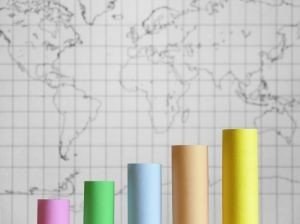Forex market analysis
Want to learn how to earn money in forex? Great! Then you need to know a few things about how to analyze the foreign exchange market. From fundamental analysis, technical analysis and other strategies, this guide will introduce you to the basics of forex market analysis.

Begin trading today with zero risk: A free demo with good brokers is the way to go, don't risk your own cash straight up. Learn how to do trading properly first! We recommend: Start by reading this review/test of the current leading trading service.
There are three ways to analyze market:
Technical Analysis
Fundamental Analysis
Sentiment Analysis
Each form of analysis has its advantages and disadvantages. Let 's take a closer look at these three forms of analysis.
Differences between technical analysis, fundamental analysis and sentiment analysis:
Imagine that weather is an analogy / metaphor for the currency market. Two completely diff things of course, but the following example may be a useful comparison:
Imagine a market where you bet on the weather, instead of betting on exchange rates.
If one were to predict the weather using Technical analysis, would be seen on the weather of the past. One looks backward in time: In Hallingdal month of July was the hottest month in the past fifteen years. It would therefore be natural to assume that July will be the hottest month in Hallingdal in July next year.
Simply by Fundamental analysis, there are other factors that count -in. Here is one more concerned with the state of things in order to predict the future. If we continue the analogy of the currency market and the weather would be in fundamental analysis looked at things that we know affect the weather, as in what direction the big winds moving temperatures, high pressure and low pressure and so on.
Sentiment Analysis has a completely different approach than the other two methods of analysis. The analogy fits probably not as good in terms of sentiment analysis, but we still continue with the comparison between the weather and currency markets, we have studied what people think about the weather prospects. The difference here of course is that what we think about the weather can not affect the weather, while in the foreign exchange market is one of the opinions that drive the market.
Significant here is that technical analysis, fundamental analysis and sentiment analysis are three distinct forms of analysis, but the goal is the same for all: to predict future prices in the currency market.
This analysis forms are also used in the stock market, commodity market and other financial markets, so to learn a little about this will give you benefits outside the currency market.
Technical Analysis
Technical analysis involves studying history courses. The relevant figures you are looking at is when price movements. Take on technical analysis already with our helpful tips.
Stock trading can be seen not only at the price movements, but also by volume. The volume indicates how much it has been acted on. In the currency market, there are no data indicating the volume of specific currency pairs. The foreign exchange market is simply too large and decentralized that it is possible to continuously collect information on trading volume
Theory of technical analysis is that all relevant information about a currency (or other instruments) is embedded in the price.
History tends to repeat itself, it says. In technical analysis, this is one of the core philosophy.
The first one must be familiar with the technical support and resistance.
The technical analysis method is not completely objective. How graph analysis is done is in fact very much subjective and thus prone to errors:
A technical trader can look at the graph and think "gosh, there's no resistance to stop further increase of this currency pair, doubling the price possible! Hell, I'm going to buy now!".
Another technician might think "I do not like formation on this graph, time to sell out now!". Technical analysis is thus a more subjective analysis form than what many like to have it.
Learn technical analysis free
Technical analysis is something you can read to themselves, and the internet is an excellent source you can use for this.
Suggestions for what to learn more about:
Support and resistance
Trends and trend channels (rising or falling market)
Volume and volume balance
Candelsticks graphs
Fibonacci used in technical analysis
Moving Average (moving averages)
Indicators in graphs (chart indicators)
Indicator RSI (Relative Strength Index)
Oscillators (oscillators)
Momentum indicators
Formations (chart patterns)
Pivot points
Elliott Wave theory
Harmonic price patterns
Technical Analysis Strategies
As you can see there is much to tune to on your own. Although you can learn everything you need to know about technical analysis free on the internet is probably your best choice however to choose a good book on technical analysis (see below).
Learn technical analysis on your own
Not at all traders start their career by reading books on technical analysis. Some start with a basic understanding of simple concepts such as support and resistance, while the trader they learn little by little. Preferably with a demo account in the beginning.
Many online brokers have simple explanations of how to practice technical analysis, and these simple guidelines are in many cases good enough.
Should you eventually want to expand your technical knowledge horizon can supplement their with financial books or reading on the internet eventually, but in many cases hold the words to just trial and error and reading the easy to read instructions that many online brokers offer.
An important point for those who want to base your strategy on technical analysis:
Make a profitable strategy and follow it slavishly. Do not buy if you get ambiguous technical signals. Buy at your signals screaming " buy " and sell (or buy weaned) when the signal says " sell ". Do not force through a trade if the technical signals do not meet your criteria for purchase or sale.
Fundamental analysis
What is fundamental analysis? It is a study of the fundamentals, and then of course valtuahandel a study of the fundamentals of a currency.
Should we study the USD looks at the economic fundamentals in the United States. Fundamentally does not mean that there is something superficial, but rather that one tries to look at the main factors that affect a currency, and it could be many things:
Finances of countries that belong to currency
Political conditions and political decisions
Social issues and reports or disclosure of data related to these conditions
Larger events (natural disasters, financial crises, pandemics...)
Data used in fundamental analysis
Collection, processing and analysis of data essence of any financial analysis forms.
Goal of fundamental analysis is to provide insight into how the market will react to specific economic events.
For short-term speculators are enough technical analysis superior to the fundamental analysis form.
Fundamental analysis we collect data from a variety of sources. To keep up to date and collecting data can be a big task, but fortunately there are simple ways to do this.
The simplest is to choose an online broker that keeps you updated with all important reports, so you never take the trouble to collect the data.
Collection of data is so far only the beginning of fundamental analysis. We also need to find out what the data means.
Fundamental data can be so many things...
What does that mean for the dollar if the Federal Reserve increases the interest rate? What does that mean for the US dollar if Central Bureau of Statistics publishes a report on rising unemployment? And what if the European Central Bank introduced a new monetary policy, what will happen to the euro then?
Data published (for example, government reports) will affect the economy.
There is much uncertainty about fundamental analysis.
No analytical form is perfect and there is no way that with full accuracy can provide accurate predictions about the market every time.
Challenge all forms of financial analysis is to predict how the market will react. In other words, one must predict how people, with all their different perceptions of the world and the economy will react.
As you know, the people who control the economy, and we humans are thinking beings, but none of us think exactly the same. Even two traders with much the same trading philosophy may consider whether forskellige thing about market direction.
Market tend to react to what people feel on the market. These feelings are based on the economic reports and their assumptions about the current market situation.
While fundamental analysis offers uncertainties, though it still is useful for the long-term investor.
A combination of fundamental analysis and technical analysis can give you a better understanding of the market. As an independent trader is still a limitation in what you can do yourself. Therefore, the height of the focus being on only one particular form of analysis.
There is also a third form of analysis as well as fundamental and technical analysis, which can help us to predict the market. This is called sentiment analysis.
Sentiment analysis
Sentiment Analysis is primarily a vehicle for the long-term investor, but also to some extent for the short-term trader who wants to unruly in plenty of different ways to analyze the market.
Every trader in the foreign exchange market have their own personal views about the market. The trader think about the market affects how he acts in the market.
Market Sentiment is the total combined " feeling " that the participants in the market about the market.
Analysis of market sentiment is what we call sentiment analysis.
But how can we analyze and measure what people are saying about the market?
When a trader buys euros and sell dollars, he says that he believes that the euro will strengthen against the dollar. If tens of thousands of traders worldwide desperately trying to get rid of (sell) dollars, it tells us that these traders have little faith in the dollar ahead.
As previously mentioned, it is not possible to know how much of the different currencies are traded.
Daily volume in the foreign exchange market is unknown. Therefore, we must find other ways to find out what is popular to buy and sell lately.
Commitment of Traders Report provides a good indication of trades in currency market. There is no adequate substitute for volume data, but still better than nothing. The report does not apply to foreign exchange market, but for the futures market. It's the closest you can get volume data in the foreign exchange market (at least in the spot market where forex traders trades).
Sentiment Analysis is just another tool when you are analyzing the forex market.
If you think sentiment analysis seemed a bit too complicated or vague, just forget it. Many pro traders in the forex market using only technical analysis and / or fundamental analysis and achieved great success with it.



